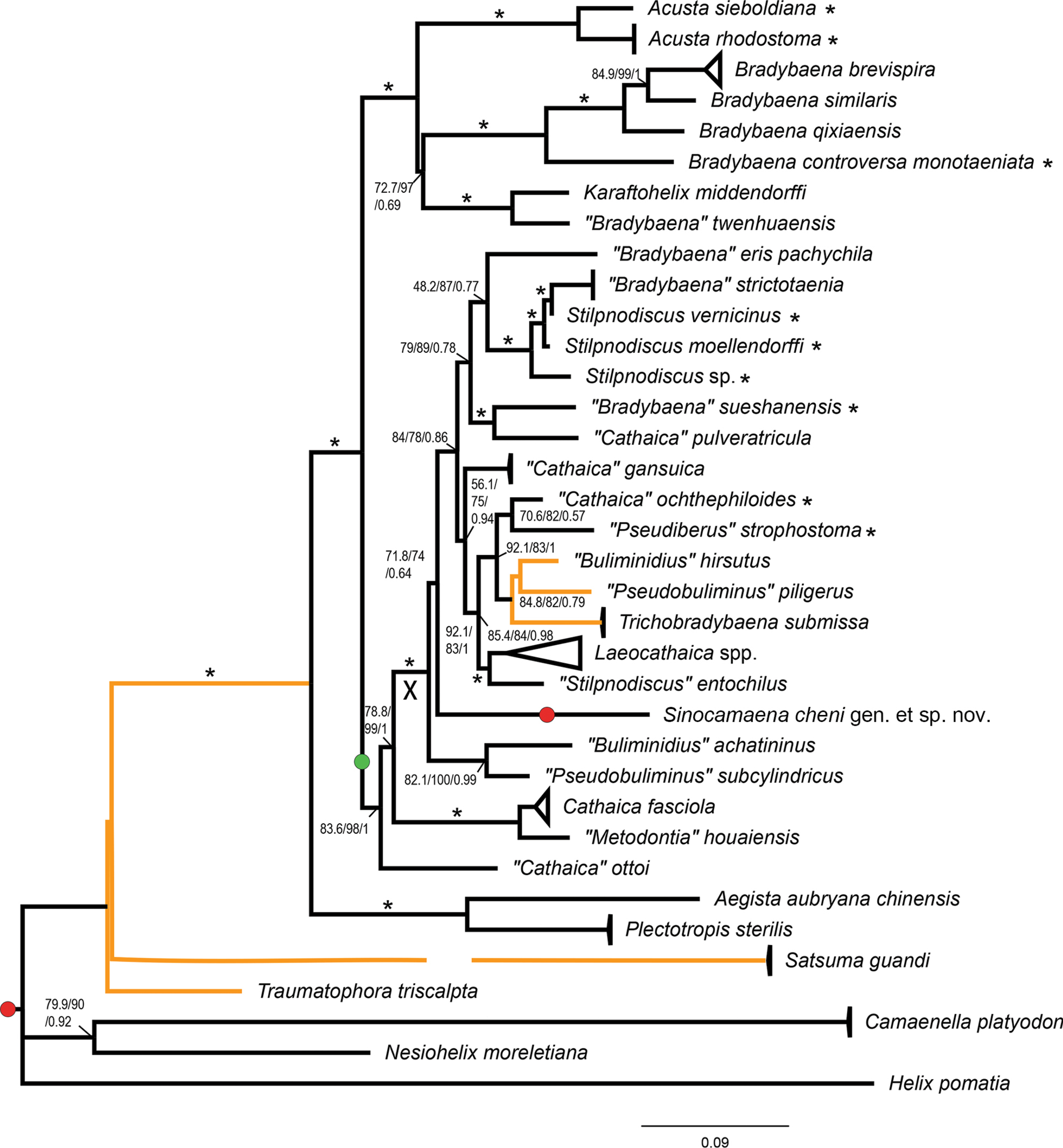
|
||
|
Maximum-likelihood phylogram based on the concatenated partial mitochondrial 16S and partial ITS2 sequences of East Asian camaenid species. The tree is rooted on Helix pomatia. Numbers near nodes indicate the Shimodaira and Hasegawa-approximate likelihood-ratios (SH-aLRT)/approximate Bayes test (aBayes)/ultra-fast bootstrap (IQ-TREE, maximum likelihood)/posterior probability (MrBayes, Bayesian inference). An asterisk on the branch indicates a clade with all well-supported values (SH-aLRT ≥ 80%, aBayes ≥ 0.95, BS ≥ 95%, PP ≥ 0.95). The broken branch indicates that the branch is shortened to exactly 1/2 the original length. Scale bar is for substitutions per site. Orange branches indicate where the BI tree topologically differs from the ML tree. Red dot/green dot indicates every terminal on that branch that has/has not a mantle lobe. An asterisk after the species name indicates that observation of the mantle lobe failed due to the bad condition of the specimen. The species under the genera in quotes are thought to be questionable generic assignments (Wu et al. 2023). |